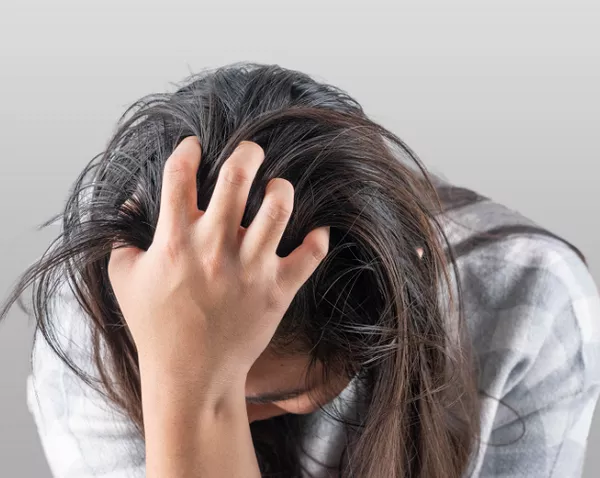The quest for effective hair loss treatments has been a perennial concern, as both men and women grapple with the impact of thinning hair and baldness. This comprehensive guide navigates through various hair loss treatments, shedding light on the most promising options and the frequently asked questions surrounding them.
1. Understanding Hair Loss
Types and Causes:
Androgenetic alopecia (AGA) is the most common cause of hair loss, affecting both genders. Other contributors include hormonal changes, nutritional deficiencies, and medical conditions.
Understanding the specific type and cause of hair loss is crucial for choosing the most suitable treatment.
Normal Hair Growth Cycle:
Hair goes through a growth cycle consisting of anagen (growth phase), catagen (transitional phase), and telogen (resting phase). Disruption in this cycle can lead to excessive hair shedding.
2. Topical Treatments
Minoxidil:
Minoxidil is a widely recognized topical treatment approved by the FDA for hair loss. It stimulates hair follicles, prolonging the anagen phase and promoting hair growth.
Available over-the-counter, minoxidil is applied directly to the scalp, offering a convenient option for many.
Topical Finasteride:
A newer addition to topical treatments, topical finasteride inhibits the hormone DHT, a key player in hair loss. This application minimizes systemic side effects associated with oral finasteride.
3. Oral Medications
Finasteride:
Oral finasteride is an FDA-approved medication that inhibits the production of DHT, a hormone linked to hair loss. It is commonly prescribed for men experiencing male pattern baldness.
Dutasteride:
Similar to finasteride, dutasteride inhibits DHT but is not FDA-approved for hair loss. It is sometimes used off-label for more comprehensive DHT suppression.
4. Platelet-Rich Plasma (PRP) Therapy
PRP for Hair Loss:
PRP therapy involves drawing a patient’s blood, processing it to concentrate platelets, and injecting the enriched plasma into the scalp. Platelets contain growth factors that stimulate hair follicles.
Efficacy and Considerations:
Studies suggest that PRP therapy may enhance hair thickness and density. However, individual responses vary, and multiple sessions may be required for optimal results.
5. Hair Transplantation
Follicular Unit Transplantation (FUT):
FUT involves harvesting a strip of scalp from the donor area, extracting individual follicular units, and transplanting them to the recipient area. It is effective for larger areas of hair loss.
Follicular Unit Extraction (FUE):
FUE is a minimally invasive technique where individual follicular units are directly extracted from the donor area and transplanted. It leaves tiny scars and offers quicker recovery.
6. Laser Therapy
Low-Level Laser Therapy (LLLT):
LLLT utilizes low-level lasers or light-emitting diodes to stimulate hair follicles and promote hair growth. It can be delivered through devices like laser caps or helmets.
Efficacy and Consistency:
While research suggests positive effects of LLLT on hair growth, consistent and long-term use is essential for maintaining results.
Frequently Asked Questions
Q1: Are there natural remedies for hair loss?
Yes, natural remedies like a balanced diet, proper hair care, and essential oil applications may contribute to overall hair health. However, their effectiveness varies, and they may not be standalone solutions for significant hair loss.
Q2: Can stress cause hair loss?
Stress can contribute to hair loss, triggering conditions like telogen effluvium. Managing stress through relaxation techniques or counseling may positively impact hair health.
Q3: Is there a cure for genetic hair loss?
While there is no outright “cure” for genetic hair loss, various treatments can effectively manage and slow down the progression. Early intervention often yields better results.
Q4: How soon can one expect results from hair loss treatments?
Results vary based on the treatment. Topical treatments may show effects in a few months, while hair transplantation may take several months for full results. Patience is key.
Q5: Are there age restrictions for certain hair loss treatments?
Age considerations exist for medications like finasteride, which is FDA-approved for men above a certain age. Hair transplantation is generally suitable for adults.
Q6: Can women use the same hair loss treatments as men?
While some treatments like minoxidil are approved for both genders, others, such as oral finasteride, are typically prescribed for men. Consultation with a healthcare professional is advised.
Q7: Are hair loss treatments covered by insurance?
Insurance coverage varies. Hair loss treatments considered cosmetic may not be covered. Hair transplantation may have coverage if deemed medically necessary due to certain conditions.
Q8: Can I stop using hair loss treatments once I see improvement?
For many treatments, consistency is crucial. Discontinuing use may lead to a reversal of benefits. Consult with a healthcare professional before making any changes to your regimen.
Conclusion
Navigating the realm of hair loss treatments requires an understanding of the diverse options available. Whether opting for topical solutions, oral medications, advanced therapies, or surgical interventions, individuals can make informed decisions to address their unique hair loss concerns. Regular consultations with healthcare professionals and dermatologists play a vital role in tailoring a personalized approach to combatting hair loss and fostering renewed confidence.

